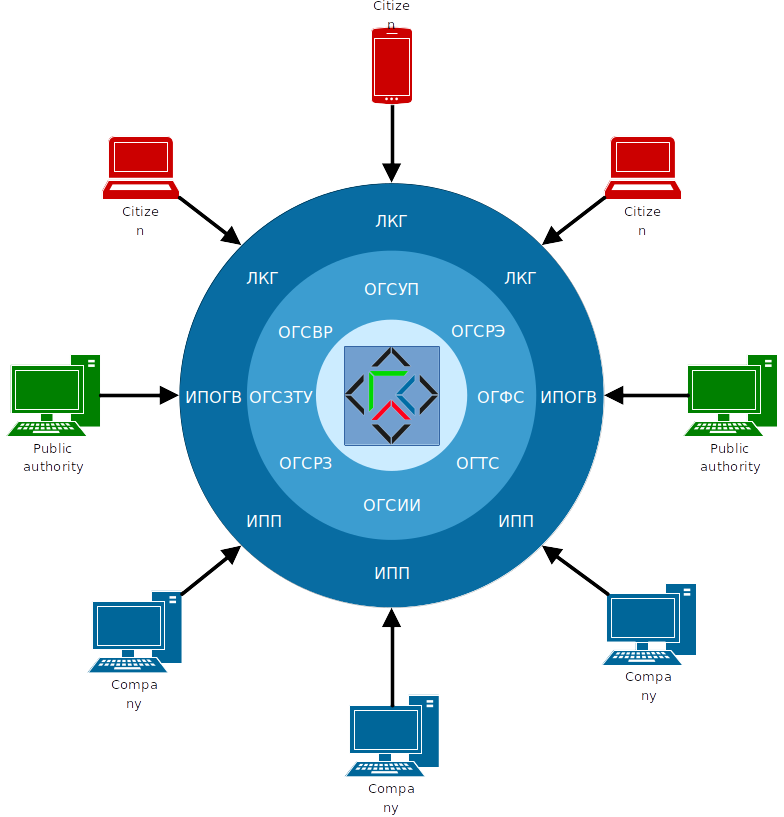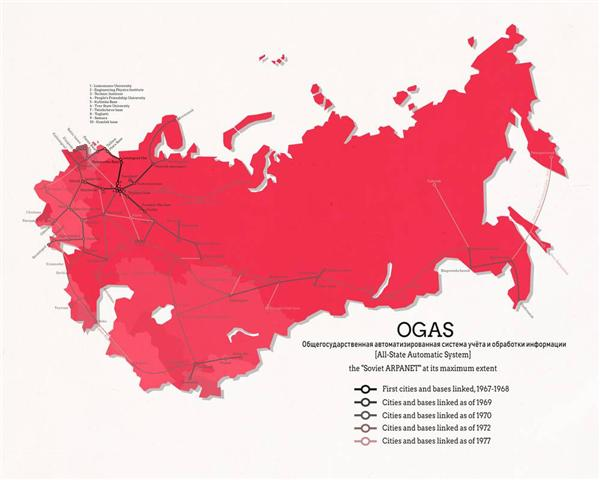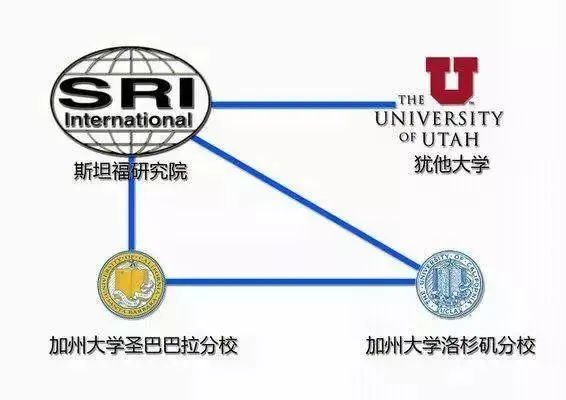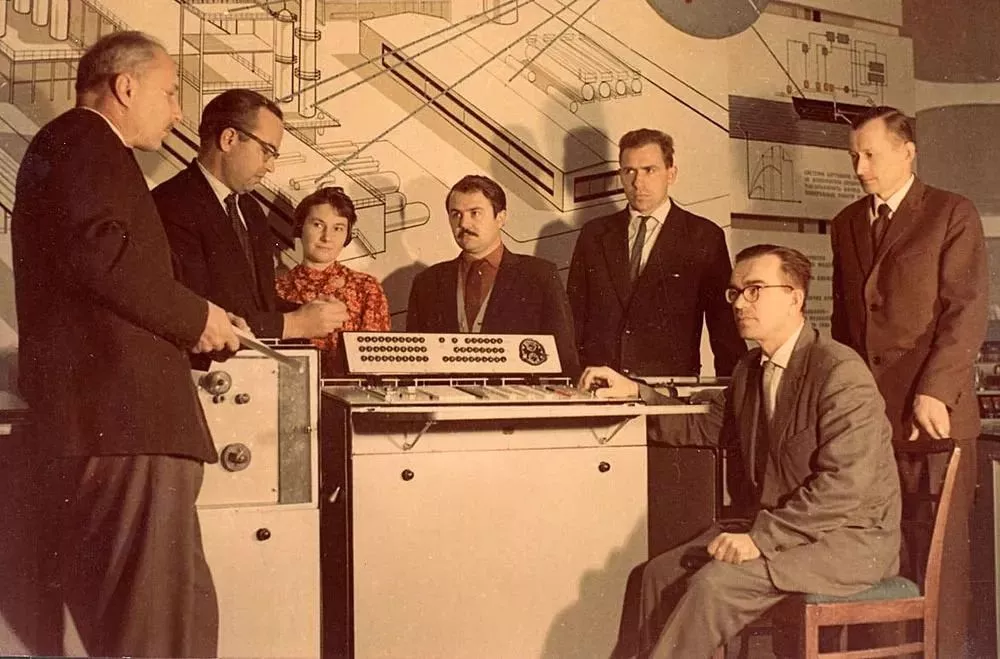The Soviet Union almost invented the Internet and put the United States on the verge of a formidable enemy, but was killed by its own people...
 The Soviet Union almost invented the Internet and put the United States on the verge of a formidable enemy, but was killed by its own people...
The Soviet Union almost invented the Internet and put the United States on the verge of a formidable enemy, but was killed by its own people...In the 1960s, the once-rapidly developing Soviet economy stagnated. When reforms were urgently needed, a bold idea emerged:
Connect all computers in the Soviet Union into a network, collect and process data from all factories, and allow them to produce as needed.
The network, called OGAS, envisions a range of advanced technologies such as sensors, real-time data transmission, distributed computing, artificial intelligence, and even digital currencies.
This ambitious plan has made the U.S. government feel threatened, believing that the project will "significantly promote productivity growth"!
But it is a pity that OGAS was not established and became a ruin of history.
The ARPANET in the United States built the prototype of the modern Internet.
For most of the time, the Soviet Union adopted a planned economy, and the country's economic activities were controlled and operated by the "troika":
Gosplan: State Planning Commission, which makes plans
Gossnab: National Committee for Material and Technical Supply
Gosbank: national bank, responsible for finance
The early planned economy allowed the Soviet Union to achieve great success, growing faster than any other country, especially in the fields of heavy industry, military and aviation.
Behind the success, there are also huge hidden dangers: planners and planners obtain lagging information, resource allocation efficiency is very low, and it is easy for supply to exceed demand or oversupply.
After Khrushchev came to power, he began to encourage the development of computer science and industrial automation. In particular, cybernetics was "rehabilitated" in the Soviet Union. Cybernetics was not a "bourgeois pseudoscience" but had great potential for the Soviet Union. tool.
Based on cybernetic principles, better resource planning can be achieved using interconnected computers.
 picture
picture
In 1962, Soviet cybernetics expert Viktor Mikhailovich Glushkov wrote to Khrushchev calling on the Soviet Union to accelerate computerization and proposed an ambitious plan: OGAS.
The purpose of OGAS was to create a real-time computer network to monitor and plan the flow of resources and production in the Soviet economy.
From an architectural perspective, this is a three-tier system:
 picture
picture
First level: 20,000 computer terminals collecting data from all over the country.
Second level: 100-200 mid-level regional planning decision-making systems
The third level: long-term forecasting, run by central planners in Moscow.
Glushkov even envisioned the electronicization of money and financial flows, i.e. electronic payments.
 picture
picture
OGAS is like a nervous system. Factories and workers are bodies. They could not cooperate well before because the two-way communication with the brain (Soviet leadership) was not smooth—in the era of planned economy, there was only one-way communication.
Now the brain can control the body easily and consistently, and the inefficiencies of bureaucracy are eliminated!
Western countries believe in self-regulation of the market, while the Soviet Union's OGAS uses computers to collect historical information, analyze it, provide information for production, and make predictions, which is a bit like the current big data + AI.
This was very advanced in the 1960s!
However, OGAS was not completed as expected. First of all, the cost was too high. Such a network would take 30 years to build and cost 160 billion rubles. In 2016 dollars, that's about $1.4 trillion. That’s more than the Soviet atomic bomb and space programs combined.
 picture
picture
Secondly, the technology is not mature enough. The Soviet military's technology is world-leading, but it is unwilling to transfer it to civilian use.
Finally, the most important thing is bureaucratic obstruction. If from now on cold computers collect data and make decisions "objectively", then your rights will be gone!
In 1969, America's ARPANET, the predecessor to the Internet, came online, much to the surprise of the Soviet leadership.
 picture
picture
Inspired by ARPANET, Glushkov promptly changed the goal of OGAS and created a simplified version:
Instead of controlling the Soviet economy like a nervous system, use it as a universal information repository that allows information and data to flow between state agencies.
This is actually a bit like ARPANET.
 picture
picture
In late September 1970, Glushkov boarded a train from Kiev to Moscow for a meeting crucial to the future of the Soviet Internet.
On a windy morning on October 1, Glushkov sat on a long table in the Kremlin and participated in a meeting of the Soviet Politburo.
Many senior executives spoke positively of the improved OGAS.
But the Finance Minister feels that this thing may have huge political influence and may weaken the rights of other departments and affect the balance between power departments. He believes: OGAS is good, so good that it can only make hens lay more eggs.
The finance minister then hit back at ambitious OGAS with a more conservative proposal.
In this way, OGAS was neither fully accepted nor rejected, and was placed in an awkward position.
Thanks to Glushkov's efforts, OGAS did not completely stagnate. Some local area networks were gradually established in various parts of the Soviet Union, but they could not be connected into a national and unified network.
Because these LANs were built haphazardly, without considering any standards, they simply cannot be connected.
In 1982, Glushkov, the chief architect of the Soviet Internet, died at the age of 58.
That same year, Soviet computers were connected to the Internet for the first time.
A relatively big flaw of OGAS is that it requires the entire system to be completed before it can generate value. In other words, it's all or nothing.
This makes the entire project seem like a utopian dream.
Bureaucratic obstruction makes it difficult for OGAS to advance. Leaders of local rights centers oppose its functions and want to tailor it to meet their own needs.
OGAS challenged the Soviet management model and faced many difficulties in its advancement.
From a technical point of view, the construction of a large and complex system is difficult to jump to the finish line at once.
Such a system needs to be built from the bottom up, from point to surface.
The development of the Internet followed this path. First, the simple but scalable ARPANET was established, and then open network protocols such as TCP/IP were developed to allow everyone to connect independently, gradually forming a global network.